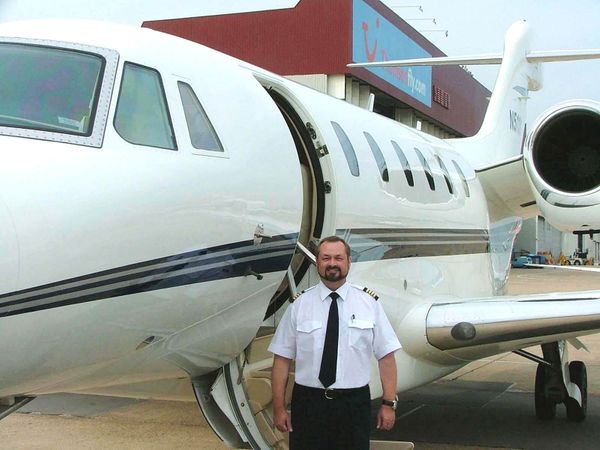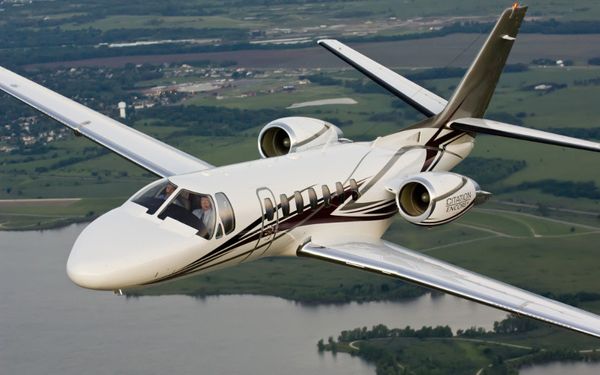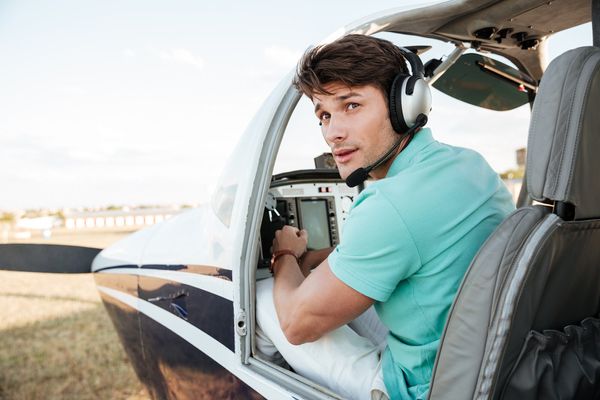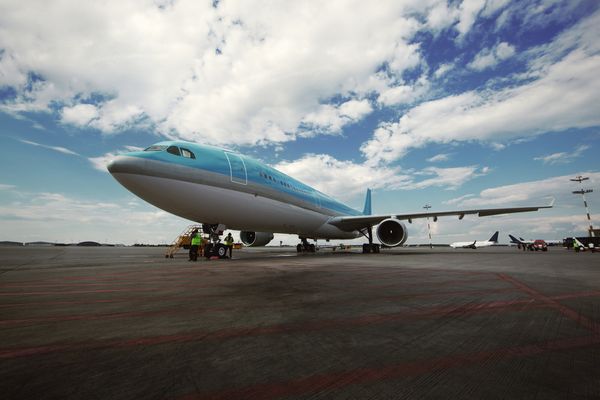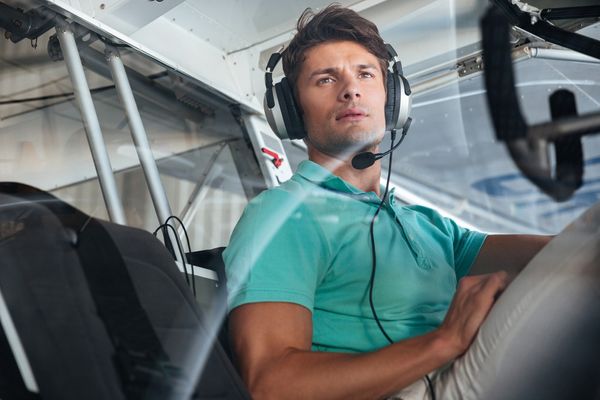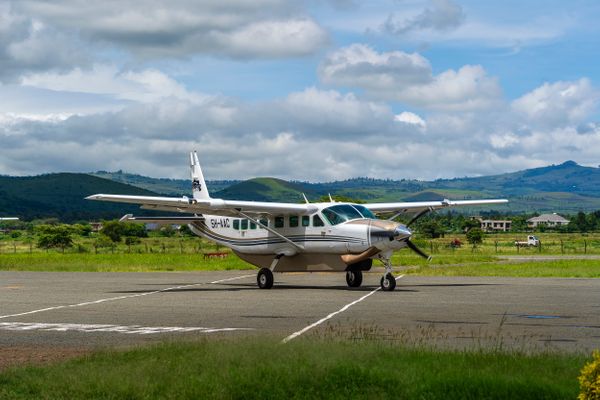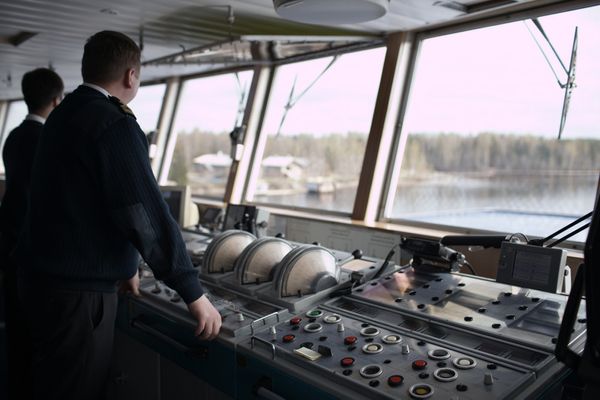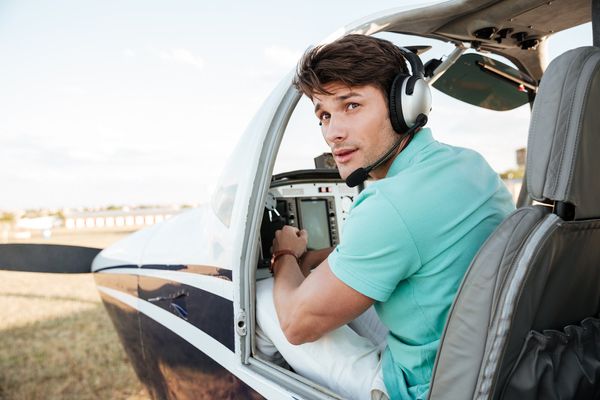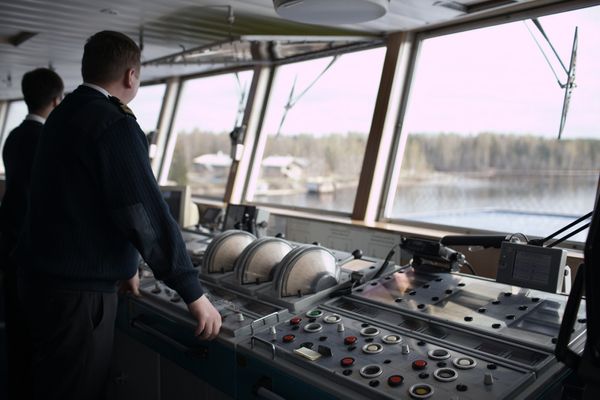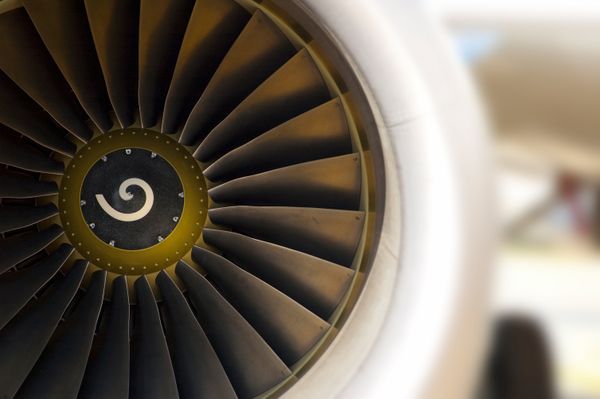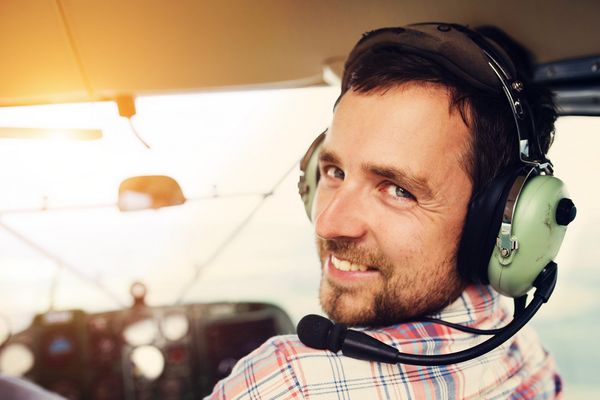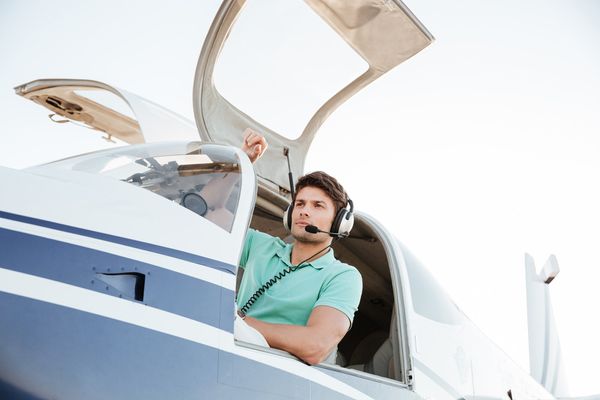The Role of the CE-525 Type Rating in Aviation Safety
At Jet Safety International, we’re passionate about assisting pilots to fly with precision and confidence, and a CE-525 type rating is part of that mission. Flying a Citation 525 series aircraft demands specialized skills, and this certification ensures you’re ready to handle the complexities of these jets safely. In this blog, we’ll explore how a CE-525 type rating bolsters aviation safety, enhancing your skills and confidence. Let’s see how this this training will help you.
moreTimelines to Expect for Our Citation Recurrent Training Courses
At Jet Safety International, we know that keeping your skills sharp as a pilot is a top priority, especially when it comes to citation recurrent training. Whether you’re flying a CE-500 or CE-525 series aircraft, staying current and proficient isn’t just about meeting regulations—it’s about ensuring safety and confidence in the cockpit. In this blog, we’ll walk you through the timelines you can expect when you train with us so you’re ready to soar with peace of mind.
moreTimelines to Expect for Our Citation Recurrent Training Courses
At Jet Safety International, we know that keeping your skills sharp as a pilot is a top priority, especially when it comes to citation recurrent training. Whether you’re flying a CE-500 or CE-525 series aircraft, staying current and proficient isn’t just about meeting regulations—it’s about ensuring safety and confidence in the cockpit. In this blog, we’ll walk you through the timelines you can expect when you train with us so you’re ready to soar with peace of mind.
moreCommon first time Citation PIC Type Rating Training Challenges Jet Safety International Will Help You Overcome
Citation PIC initial Type Rating training is a significant step for pilots looking to further their skills and careers. At Jet Safety International, we understand the unique challenges that come with this training. Our commitment to excellence ensures that you receive the support and guidance needed to navigate these challenges effectively.
moreHow a Citation SIC Type Rating Can Further Your Flying Career
The aviation industry demands that pilots enhance their knowledge, skills and qualifications for career development.
Earning a Citation SIC type rating can be a significant step toward career growth. Whether you're just starting in in jet aircraft or looking to broaden your qualifications, this certification is an asset that can open doors to the next step.
moreCommon Challenges Faced During Citation PIC Training Jet Safety International Will Help You Overcome
Citation PIC training is a crucial step for pilots looking to further their skills and careers. At Jet Safety International, we understand the unique challenges that come with this training. Our commitment to excellence ensures that you receive the support and guidance needed to navigate these hurdles effectively.
moreCE-525 Type Rating Training and Your Path to Aviation Excellence
Pursuing your initial jet Type Rating in a CE-525 is a highly significant step for a pilot looking to further their aviation career. No matter what your current aviation experience, your initial jet Type Rating in a CE-525 is will shape you’re skill and confidence as a pilot. At Jet Safety International, we know exactly how to provide a comprehensive, efficient, and supportive training experience tailored to your unique needs.
moreHow Our Aviation Consulting Services Put the Emphasis on Safety and Operational Efficiency
At Jet Safety International, our aviation consulting services are designed to emphasize safety and operational efficiency for our clients. We aim to provide the highest quality training and consultation that meets the unique needs of each operator and pilot. Read on to discover how our services can enhance safety and operational efficiency.
moreCitation Recurrent Training Without Compromise From Jet Safety International
Recurrent training is an absolute necessity to maintaining pilot proficiency, meeting regulatory requirements, and adapting to technological advancements.
moreWhy Your First Citation PIC Type Rating Should Be in the Actual Aircraft
Obtaining your first PIC type rating is an essential milestone. Here’s why your first Citation PIC type rating should be earned in the actual aircraft.
moreCommon Challenges in CE-500 Type Rating Training and How to Overcome Them
Are you looking for CE-500 type rating training? Continue reading for the challenges you will face and how to overcome them.
moreHow Air Traffic Control Communications Should Be Done in International Operations
Communication is a key aspect of pilot training. Here is how air traffic control communications should be done in international operations.
moreHow Long Does It Take to Complete a PIC Type Rating?
A type rating is required to fly a “large aircraft” meaning one that has a maximum certificated takeoff weight of greater than 12,500 lb. or an aircraft that is jet powered.
moreAviation Consulting Services Multicrew Pilot License (MPL)
Jet Safety International has been involved in aviation consulting for major Asian airlines both within the United States and in Southeast Asia.
more3 Ways Aviation Consulting Services Can Improve Airline Operations
At Jet Safety International, our aviation consulting service is dedicated to helping your airline improve operations safety.
moreSpring Cleaning, Aviation Addition: When Is It Time to Refresh Your Flight Training?
Spring is right around the corner. While you're cleaning around your office and getting ready for the warmer weather, it may be worth considering refreshing your flight training, too. While certain pilot licenses don't expire, recurrent training is still important (and often required), especially because safety procedures can change. But how do you know when it's time to refresh your flight training?
Consider Your Type Rating
According to SkyTough, there are over 100,000 commercial pilots operating in the United States. Different pilots have different type ratings, which is the designation on your license that proves you can fly a specific aircraft. The FAA mandates certain requirements depending on your type rating. For example, a SIC-type rating doesn't expire, but it's necessary to have three bounces in the last year. A PIC-type rating, on the other hand, needs to be current, and you'll need annual recurrent training to maintain your license. This is for your safety as well as for the safety of others on the aircraft and on the ground.
Consider How Long You've Been Flying
While all pilot certificate holders in the U.S. are required to take a biennial flight review every 24 months, you may need recurrent trainings if you've taken a longer break from flying. Of course, you'll still have your credits from your initial classes and certification, and your pilot's license doesn't go away simply because it's been many years since you've gotten behind the wheel of a plane. However, you'll need additional recurrent training to ensure you're up-to-date on the latest regulatory changes, safety procedures, and more.
moreJet Safety International: Excellence Across the Globe
Even if you aren’t located in the United States, Jet Safety International is here to provide for your recurrent and citation training needs.
moreHow Do Different Weather Conditions Impact Flying?
Earning your pilot's license and receiving recurrent training classes are a great way to build new skills and hone current ones.
moreWhat Pilot's License Do You Need in the New Year?
Read this blog to learn what kind of pilot's license you need for the new year. Course instructors will be able to help.
moreWhy Airlines Considering MPL Training Need a Consultant
MPL consultancy services can assure excellence in the certification and implementation of world-class flight crew training.
moreWhen Is It Required to Have an SIC-Type Rating?
If you're in need of an SIC-type rating, you can begin by completing the CE-525 SIC-type rating course at Jet Safety International.
moreBack to Flight School: 5 Things You Need for Flight Training
Whether you're new to flight classes or in recurrent training, it's crucial to make sure you're prepared to get behind the wheel of a plane.
moreWhat Makes Jet Safety International Ideal for International Aviation Training?
Our course instructors offer training for pilots who may be transitioning to a different aircraft or who may be flying multiple types within a series.
moreSingle-Pilot Resource Management (SRM)
At Jet Safety International, your course instructor will introduce you to Single-Pilot Resource Management and ADM, which are beneficial.
moreWhat Do Aviation Training Consulting Services Involve?
The aviation industry is constantly evolving, with a growing demand for skilled pilots and specialized aviation services. As the number of commercial pilots in the U.S. surpasses 100,000, the need for effective management systems to ensure safety and regulatory compliance becomes paramount. These services provide valuable guidance and support to aspiring pilots seeking to obtain their Pilot in Command (PIC) and Second in Command (SIC) type ratings. Let's explore the services involved and how they are relevant to individuals pursuing these certifications.
What is Aviation Consulting?
Aviation consulting services cater to both private and public aviation companies, individuals and more, offering guidance on operational best practices and procedures. Consultants provide businesses and pilots with expertise in policies, safety, maintenance, regulatory compliance, and other areas.
What Do These Services Involve?
While specific offerings may vary among aviation service providers, some common services include:
more
CRM & TEM in citation training & citation recurrent training
What is the origin of CRM?
CRM (originally Cockpit Resource Management) originated from a NASA workshop in 1979 with an NTSB recommendation made during their investigation of the 1978 United Airlines Flight-173 crash in which a DC-8 crew ran out of fuel over Portland, Oregon while troubleshooting a landing gear problem.
The evolution of CRM (now Crew Resource Management) over the years has changed the letter ‘C’ to “Crew” because CRM involves the entire flight and ground crew including ATC. The basic principles of CRM emphasize the Non-Technical aspects of Airmanship and are part of required training for PIC type rating and SIC type rating.
What is Airmanship?
Airmanship is to operate an aircraft: SAFELY, EFFICIENTLY, and EFFECTIVELY, Utilizing;
Technical (Knowledge and Skill) and
Non-Technical Domains (Attitude / CRM / TEM).
What is CRM and who needs it?
CRM is a discipline that includes skills and procedures providing the means of improving human behavior in interpersonal relationships. CRM is both an observable discipline and a set of behaviors that are essential for pilots with an SIC Type Rating or a PIC Type Rating.
more3 Reasons Why PIC Recurrent Training Classes Are Worth It
1. Necessary
If you already have a PIC type rating, you are undoubtedly aware that to continue to fly that aircraft type as PIC, recurrent training classes are required by law. Specifically the FAA regulation 14 CFR Part 61.58 Pilot-in-command proficiency check: Operation of an aircraft that requires more than one pilot flight crew member or is turbojet-powered.
This requirement is annual (12 calendar months) and if you fly multiple aircraft requiring a type rating then at least one type of recurrent training must be within 12 months and the others within 24 months.
Further, If a pilot takes the required pilot-in-command proficiency check in the calendar month before or the calendar month after the month in which it is due, the pilot is considered to have taken it in the month in which it was due for the purpose of computing when the next pilot-in-command proficiency check is due.
2. Important
PIC Recurrent Training is Important because refreshing and updating your aviation knowledge and flight proficiency is necessary for pilot competency therefore safety.
moreHow Can I Get an SIC Type Rating?
Jet Safety International is your one-stop shop for a Cessna Citation training course for a SIC type rating. Contact us today!
morePIC Type Rating: What You Should Know
What Is a Type Rating?
Aviation regulations require that to fly an aircraft with a maximum certificated takeoff weight greater than 12,500 Lbs. and/or an aircraft powered by turbojet engines that the pilots must hold at least PIC (Pilot in Command) type rating for the Captain's seat and at least an SIC (Second in Command) type rating for the co-pilot seat.
Flying a large or turbojet aircraft requires a high degree of knowledge and skill. To earn a PIC type rating, a pilot must complete extensive ground study and classroom ground school to prepare for the oral examination. The pilot in training will also undergo extensive flight training on maneuvers and procedures and simulated emergency operations in a flight simulator or in the actual aircraft to prepare for the flight portion of the examination.
Upon passing these tests, the pilot will receive a type rating on their certificate (license). Type ratings are specific to the actual aircraft type and may cover several models or versions of that aircraft type. The type ratings offered by Jet Safety International are the Citation CE-500 and CE-525.
CE-500 Type Rating
moreChoosing High Quality Advanced Pilot Training in Jet Aircraft
It can be challenging to find the right course instructor for your advanced pilot training. Read on to learn more about choosing your training.
moreSecure Your Future in Commercial Flying
If you've been flying for some time and you're thinking of advancing your career, Cessna Citation business jet training courses might be just the best thing to push you in the right direction. There are a lot of career options both domestically and internationally. but if a CE-525 type rating is on your list of goals, now is the perfect time to go for it.
Course Expectation
Classes for this particular certification include options for both Pilot in Command and Second in Command, or even if upgrading from SIC to PIC. First-time Jet training is obviously more extensive than recurrent training, which is offered at both levels. Pre-training will include a comprehensive manual including aircraft limitations, aircraft systems, performance, weight and balance. The training will begin with five to seven days of ground school for the PIC level, and one to two days for the SIC level. Following that is in-aircraft instruction, including cockpit procedures training. When flight training is completed to proficiency, there will be an oral examination, and then a flight evaluation. Upon satisfactory completion the examiner will issue a an new pilot certificate with the appropriate Type Rating.
moreLooking to Upgrade Your Career? Enroll in Citation Jet Courses
Becoming a Cessna pilot is an amazing option. Certified course instructors with years of training experience are available to help you achieve this dream.
moreAre You a Pilot Looking to Build Your Skills? Take Jet Training Classes!
For many pilots, flying is more than just a profession – it is a passion. With so many different aircraft and flight career opportunities, it can be difficult to determine your best path toward your professional flying goal. If you are a pilot looking to expand your skill set in the aviation industry, you may want to consider jet training classes.
Pilots in Demand
According to Pilot Job Central, the airline industry will see a significant need for pilots over the next 10 years. They predict that the industry will have a need for over 255,000 new pilots. With this information in mind, you have compelling reasons to become fully trained in jet aircraft systems and procedures. At Jet Safety International, we offer a variety of Cessna citation training classes on many models. These courses have the option of Pilot in Command and Second in Command training. You also have the option to take courses for CE-500, CE-525 PIC, or SIC Type Rating. These courses qualify you to perform the appropriate duties in any aircraft requiring a CE-500 or CE-525 type rating.
Available Training Courses
Covering 10 different airplane models, CE-525 training classes can be individualized to each model. The same is true for the CE-500 classes, with 11 models and individual training services. These courses give pilots the ability to refresh their knowledge and skills in their chosen aircraft. The hands-on experience initial and recurrent training we provide at Jet Safety International ensure that pilots are up to date on the latest safety procedures, standards, and practices that accompany Cessna Citation Jet aircraft. Because Cessna Citation aircraft are mostly used for corporate, business or private flights, training in this field can lead to a multitude of opportunities in your pilot career. If you are interested in growing your skills, initial and recurrent training classes on the Cessna may be the perfect option for you.
moreWhat to Expect From a CE-525 Training Course
According to the aviation industry, it takes an average of two to three months to earn a private pilot license. But you are setting your prospects a little higher than this basic certification. If you are looking to expand your professional prospects and broaden your education and understanding, CE-525 training classes are a great way to do just that.
Citation business jet training covers the operation of Cessna aircraft including the CE-500 and the CE-525. Undergoing CE-525 training will allow you to fly a wider range of models. This, in turn, will enhance your hiring prospects as an airline or business jet pilot. And as the aviation industry booms and the demand for pilots climbs higher and higher each year, the need for these niche pilots grows as well.
If you are ready to undergo a Cessna citation training course, you should know what you are signing up for. Here is a brief overview of what you can expect during this training.
Customized Curriculum
The CE-525 jet type rating courses are tailored to each candidate's experience and knowledge of aviation. This allows instructors to provide the most efficient and comprehensive learning modules to each pilot. At Jet Safety International, we are dedicated to working with you and helping you expand your knowledge and passion for aviation.
moreWhy a CE-500 or CE-525 Jet Type Rating is Necessary as the Aviation Industry Booms
On average, over 100,000 airplane flights occur internationally every day. The demand for pilots has never been higher and is projected to continue booming for the next decade. According to Pilotjobcentral, CAE forecasts that the airline industry will need about 255,000 new pilots over the course of the next decade. This highlights the need for Cessna citation training classes.
A CE-525 jet type rating greatly enhances the hiring prospects for an aspiring airline or business jet pilot.
The CE-525 jet type rating courses are tailored to each candidate's experience and knowledge of aviation, providing a comprehensive learning format for growth and certification.
How will a CE-525 Jet Type Rating enhance my career prospects?
The CE-525 type rating training course includes a full-time 7 to 12-day course for pilots of varied experience levels who already possess Multiengine and Instrument ratings.
The goal of this training is to provide the necessary knowledge and skill that allows a pilot to transition from piston propeller or turboprop aircraft to flying multicrew jet operations.
What Model Aircraft Are Covered By CE-525 Training?
moreA Look Inside CE-500 and CE-525 Cessna Private Business Jets
The CE-500 and CE-525 trainings are top-tier courses for Cessna pilots. The comprehensive courses and consultations offer an in-depth look at each jet's systems and protocols, with everything from the hydraulics system and pressurization to ice and rain protection. These recurrent trainings are applicable to many Cessna models, but let's dive into the features of two in particular.
2018 Citation CJ4
This jet has a maximum range of 2,135 nautical miles. CE-500 and CE-525 models are remarkably durable and are known to have performed several hundred flights with individual owners before being sold to a new owner. This model seats eight total passengers outside the cockpit and has several additional features. Audio receivers, phone systems, charging outlets and a monitor are just a few of the technological components. A flushing toilet, refreshment center, and slimline tables also add to its hospitality. Systems such as XM satellite weather add to the traditional transponders present in the cockpit.
CE-500 and CE-525 Trainings
Recurrent trainings are scheduled in two sessions and review every necessary system and procedure involved in piloting. Session 1 involves preflight preparation, ground operations, takeoff, departure, inflight maneuvers, emergency procedures, and post-flight debriefing. Session 2 reviews much of Session 1 but also teaches emergency descent, smoke in the cockpit, and other emergency and instrument procedures. These trainings are vital as the CAE predicts that in the next decade, the airline industry will need 255,000 more pilots.
moreA Quick Glance at our Cessna Citation Training
At Jet Safety International, we offer eight different jet training courses. We offer Second In Command (SIC) type ratings in Cessna Citation CE-500 and CE-525. We offer Pilot In Command (PIC) type ratings in Cessna Citation CE-500 and CE-525. We also offer Second In Command (SIC) recurrent training in Cessna Citation CE-500 and CE-525. We offer Pilot In Command (PIC) recurrent training in Cessna Citation Training CE-500 and CE-525.
Ground School and Cockpit Procedures Training
All of our Cessna citation training include a comprehensive ground school. The duration of ground school depends on the course you are enrolled in. SIC Type rating and recurrent training course ground school is usually one day and PIC type rating ground school is usually five to seven days. Cockpit Procedures Training is done in the actual aircraft connected to a Ground Power Unit (GPU). This will allow for familiarization of the switches and controls and checklist procedures.
Type Rating Training (CE-500 or CE-525 PIC and CE-500 or CE-525 SIC)
For PIC Type Ratings, a comprehensive manual including aircraft systems, performance, weight and balance, and pertinent regulations is provided for pre-course home study (recommended 40 hours). The Cessna Citation Training CE-525 ground school is approved by the FAA under 14 CFR Part 141, including 40+ hours of classroom ground school. After ground school and Cockpit Procedures Training, one must complete instruction in the aircraft regarding all the maneuvers and procedures in the Airline Transport Pilot and Type Rating for Airplane Airman Certification Standards to meet the required proficiency (1 or 2 days).
moreWhy a CE-500 or CE-525 Jet Type Rating is necessary as the Aviation Industry Booms
On average, over 100,000 airplane flights occur internationally every day. The demand for pilots has never been higher and is projected to continue booming for the next decade. According to Pilotjobcentral, CAE forecasts that the airline industry will need about 255,000 new pilots over the course of the next decade.
A CE-500 or CE-525 jet type rating greatly enhances the hiring prospects for an aspiring airline or business jet pilot.
The CE-500 or CE-525 jet type rating courses are tailored to each candidate's experience and knowledge of aviation, providing a comprehensive learning format for growth and certification.
What is CE-500 or CE-525 Jet Type Rating course?
The CE-500 or CE-525 type rating training courses include a full-time 7 to 12-day course for pilots of varied experience levels who already possess Multiengine and Instrument ratings.
The goal of this training is to provide the necessary knowledge and skill that allows a pilot to transition from piston propeller or turboprop aircraft to flying multicrew jet operations.
What Model Aircraft Are Covered By CE-525 Training?
more


